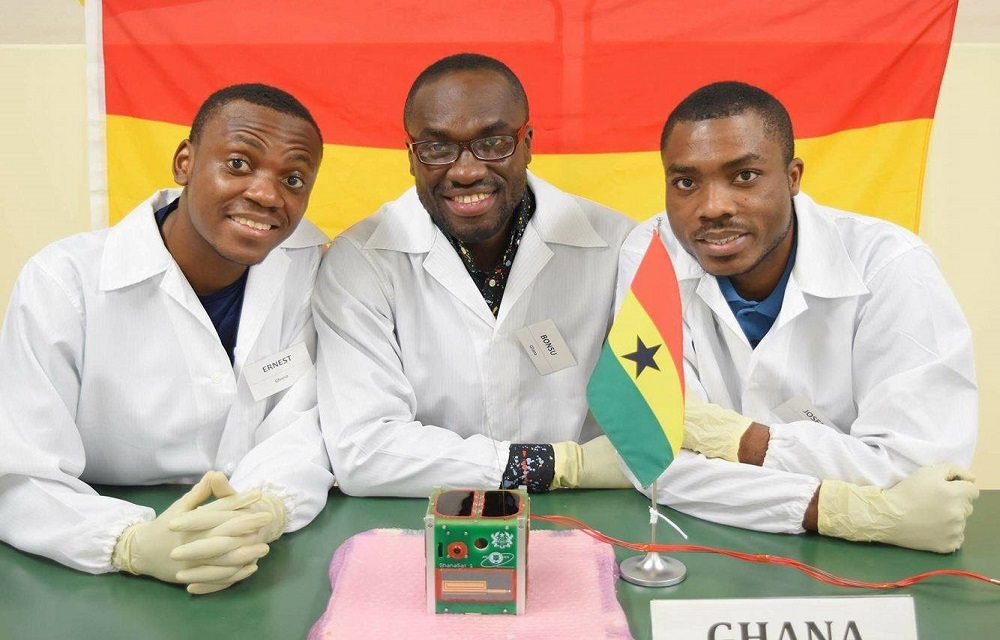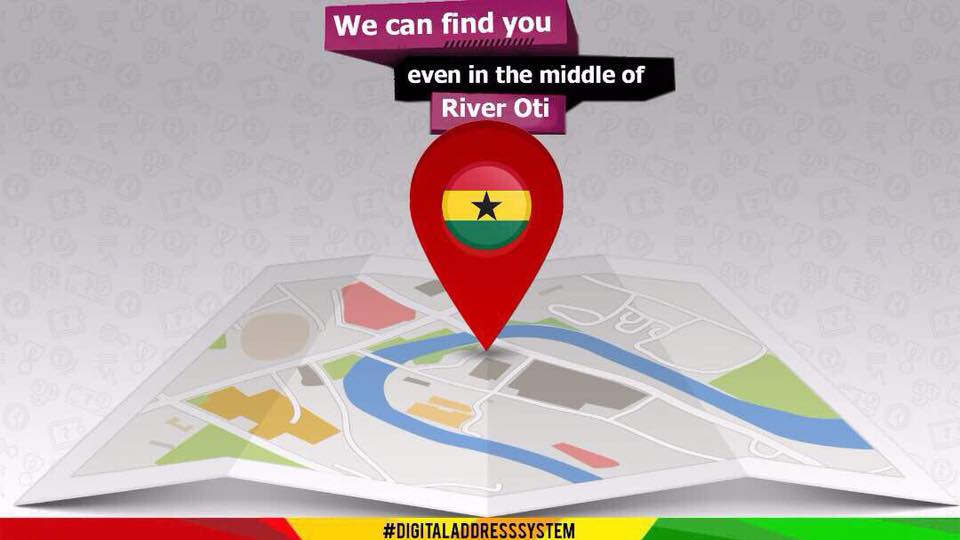
Ghanaian science and technology students have refused to trail behind in modern scientific and technological inventions and innovations. This strong ambition has given birth to the latest on their list of innovations – GhanaSat 1, which happens to be Ghana’s first satellite to be launched into space.
The credit for this space technological feat goes to three Ghanaian students of All Nations University.
According to Graphic Online report, the satellite dubbed Ghanasat-1, was delivered to the Japan Aerospace Exploration Agency (JAXA) on February 9, 2017. This was after it had gone through a rigorous safety review and flight-fit test. JAXA subsequently handed it over to the National Aeronautics and Space Administration (NASA) in Florida, U.S.
The satellite will first be launched to the International Space Station by Space X CRS-11 Cargo Mission and later deployed by a Japanese astronaut aboard the International Space Station.
About GhanaSat 1 and its Developers
GhanaSat 1 is a CubeSat, weighing 1,000 grams. The CubeSat, described as the first university satellite in sub-Saharan Africa, has low and high-resolution cameras on board to take pictures of our homeland and provide data that can be used to monitor the coastal areas of Ghana.
It also has Digi-Singer SNG mission from which the national anthem and other independence songs can be broadcast from space, as well as collect requested songs from the ground and send to the satellite to broadcast in space.
It is an initiative aimed at stimulating interest in Science, Technology, Engineering and Mathematics (STEM) education in high schools and tertiary institutions.
It will also embark on a scientific mission to investigate the radiation effects on commercial-off-the-shelf microprocessors. This means it will measure the single event latch-up occurrence that degrades electronic system on board satellites due to the harsh space environment and analyze this data to contribute to scientific research.
The two-year project, made possible through collaboration between the ANUC and the Kyutech Institute of Technology (Kyutech) in Japan, began in October 2015 and was completed in December 2016.
It was carried out entirely by three young engineering graduates of the ANUC who designed, assembled and tested the satellite when they joined the Birds project implemented by Kyutech for other four nations aspiring to be space-faring.
The trio, led by Benjamin Bonsu, a Ph.D. student in Applied Science for System Engineering, Joseph Quansah and Ernest Teye Matey, executed the project under the supervision of Professor Mengu Cho, the Director of Laboratory of Spacecraft Environment Interaction Engineering (LaSEINE) and other faculty members of Kyutech.
Previous Achievements
The young engineers and their team in Ghana were the founder members of ANUC’s Space Science and Technology Laboratory (SSTL) which designed, developed and launched successfully the university’s miniaturized Cansat on May 15, 2013, an initiative that attracted the attention of both local and international media.
The trio completed their Bachelor of Science degree in Electronics and Communications Engineering at ANUC in 2013 and constructed the university’s amateur Ground Station that currently allows the station to receive information from passing satellites.
It is an achievement that has made ANUC the first university in Ghana and sub-Saharan Africa to accomplish such a feat in space science technology applications. The effort also contributed to make the university the only local institution to be given the license as amateur operators by the National Communication Authority (NCA) in 2014.
The President of the ANUC, Dr. Samuel H. Donkor, revealed that the school decided to invest $500,000 into space science and technology research after they realized that space exploration is one of the most important technologies that could advance the development of any nation.
The massive investment, he said, saw to the development and successful launch of Cansat in May 2013, building a ground station in 2014, as well as sponsoring three graduates to further their studies in space science technology and satellite development when they joined the Birds project that offered them the opportunity to design and build the GhanaSat-1 in two years.
Meanwhile, President Nana Addo Dankwa Akufo-Addo has celebrated this feat as a meaningful development. The Office of the President in a letter to ANU asked to communicate with the three Ghanaian students during the release of the satellite. It is said that this will add much gravitas to the event.
The development of GhanaSat 1 which is Ghana’s first space satellite, is expected to bring to fulfillment, Ghana’s dream of becoming a space-faring nation, and to also boost the country’s capacity to take advantage of space science technology in the future.
The innovation which is attracting global attention will have its deployment watched live at JAXA Tsukuba Space Centre in Japan by top government officials and ministers. Images of the event will also be transmitted live at the All Nations University campus in Koforidua, Eastern Region of Ghana.







